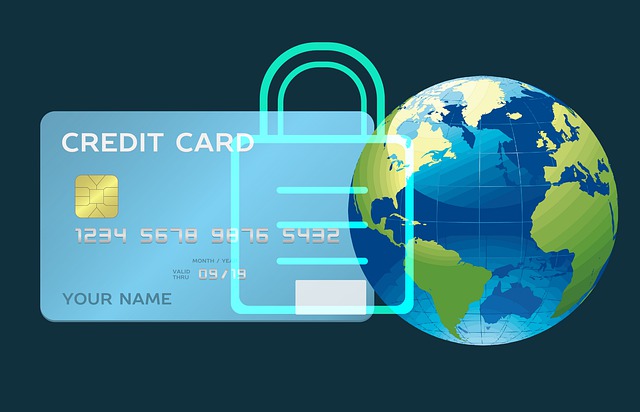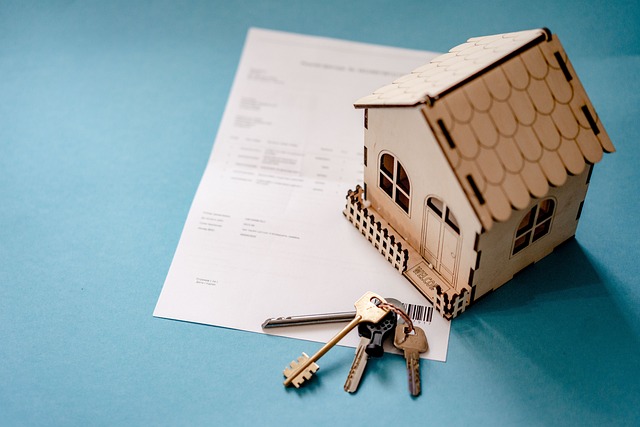Bad credit often leads to high-interest loans, making financial health challenging. Debt consolidation offers a solution by combining multiple debts into one loan with a fixed rate and extended period, simplifying repayment, saving on interest charges, and easing management. This strategy empowers individuals to regain control of their finances. When consolidating, consider secured/unsecured personal loans, home equity loans, credit card balance transfers, and lenders (banks, online, credit unions). Beforehand, assess your financial situation, create a budget, evaluate your creditworthiness, and compare lender options. After approval, adhere to the new repayment schedule and maintain good credit through on-time payments, low credit utilization, and regular credit report checks.
Struggling with multiple debts and high-interest rates? Bad credit shouldn’t stop you from consolidating your debt into one manageable loan. This guide explores how debt consolidation can simplify payments, reduce stress, and save money. We’ll walk you through understanding bad credit, the benefits of consolidating, different loan types, evaluating your financial situation, and successful steps to consolidation. Plus, learn tips for maintaining good credit afterward.
- Understanding Bad Credit and Debt Consolidation
- Benefits of Consolidating Debt into One Loan
- Types of Loans for Debt Consolidation
- Evaluating Your Financial Situation Before Consolidation
- Steps to Consolidate Debt Successfully
- Tips for Maintaining Good Credit After Consolidation
Understanding Bad Credit and Debt Consolidation

Bad credit can significantly impact an individual’s financial health, often resulting in multiple high-interest loans and a complex debt web. This situation can be overwhelming, but understanding debt consolidation as a strategy to consolidate debt into one loan offers a potential solution. By combining these debts into a single, often lower-interest loan, individuals can simplify repayment and potentially save money on interest charges.
Debt consolidation allows borrowers to pay off multiple lenders with varying terms and rates by taking out a new loan with a fixed interest rate and a longer repayment period. This approach can be particularly beneficial for those struggling to manage multiple payments, as it streamlines the process and makes it easier to stay current on repayments.
Benefits of Consolidating Debt into One Loan

Consolidating debt into one loan offers several significant advantages for individuals struggling with multiple high-interest debts. Firstly, it simplifies the repayment process by combining various loans into a single, more manageable payment. This streamlines financial obligations, making it easier to keep track of due dates and stay on top of repayments. By consolidating, you can bid farewell to the chaos of managing multiple creditors and their distinct terms.
Additionally, consolidating debt into one loan often results in lower interest rates. Lenders offer consolidated loans at more competitive rates since they perceive these borrowers as less risky. This means substantial savings over time, as a lower interest rate directly translates to reduced borrowing costs. Thus, consolidating is a strategic move to regain control of finances and avoid the compounding interest charges that can plague multiple outstanding debts.
Types of Loans for Debt Consolidation

When considering consolidating your debt into one loan, several options are available depending on your financial situation. The most common types include secured and unsecured personal loans. Secured loans require collateral, often a house or car, to mitigate risk for the lender. Unsecured loans, on the other hand, do not require collateral but usually come with higher interest rates as there’s no asset backing them. Another option is a home equity loan, which uses your home’s value as collateral, offering potentially lower interest rates but poses the risk of foreclosure if you default. Furthermore, credit card balance transfer offers can provide a temporary interest-free period, allowing you to consolidate high-interest debts onto a single card.
Debt consolidation loans can also be categorized based on their origin: traditional banks, online lenders, and credit unions. Banks often have stringent eligibility criteria but may offer competitive rates. Online lenders are known for faster approvals and flexibility in terms of loan amounts and repayment periods. Credit unions, owned by their members, might provide more personalized service and potentially better interest rates for existing members. Each type has its advantages and disadvantages, so exploring these options is crucial when consolidating debt into one loan to find the best fit for your needs.
Evaluating Your Financial Situation Before Consolidation

Before considering consolidating your debt into one loan, it’s crucial to thoroughly evaluate your current financial situation. This involves understanding the full scope of your existing debts—their amounts, interest rates, and repayment terms. Creating a detailed budget can help you grasp where your money is allocated and identify areas where you might cut back to free up extra cash for consolidation.
Assessing your creditworthiness is also essential. Lenders will evaluate your credit score and history when considering a loan application. A low credit score may result in higher interest rates, while a strong credit profile can secure more favorable terms. Understanding these factors beforehand empowers you to make informed decisions about debt consolidation, ensuring it aligns with your financial goals and capabilities.
Steps to Consolidate Debt Successfully

Consolidating debt into one loan is a strategic move for managing multiple high-interest debts and improving creditworthiness. The first step is to assess your current financial situation, listing all debts, interest rates, and minimum payments. This provides a clear picture of the amount you can afford to repay each month and helps in choosing an appropriate consolidation loan.
Next, compare different lenders and loan options. Look for competitive interest rates, flexible terms, and low fees. Once you’ve identified a suitable lender, prepare necessary documents for application, which may include proof of income, employment details, and identification. Submit the application, and upon approval, proceed with the consolidation process. Ensure you understand the new repayment schedule, and stick to it diligently to avoid further financial strain and improve your credit score over time.
Tips for Maintaining Good Credit After Consolidation

After consolidating your debt into one loan, it’s crucial to maintain good credit to avoid future financial pitfalls. Firstly, make timely payments – this is the most significant factor in rebuilding and maintaining strong credit. Set up automatic payments or reminders to ensure you never miss a deadline.
Additionally, keep your credit utilization low by using only a small portion of your available credit limit. Avoid opening multiple new accounts simultaneously as this can raise red flags with lenders. Regularly monitor your credit report for errors or fraudulent activity, and dispute any inaccuracies promptly. Remember, responsible financial habits are key to rebuilding and sustaining good credit following debt consolidation.















